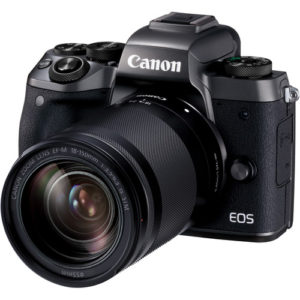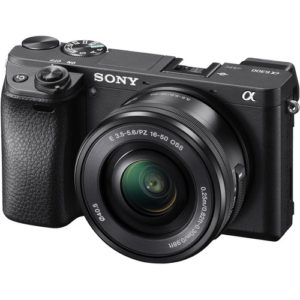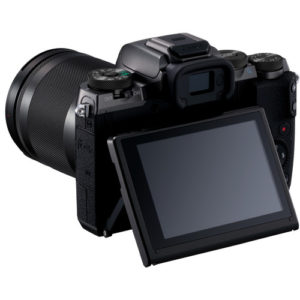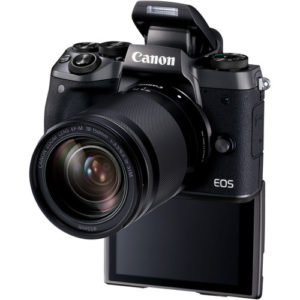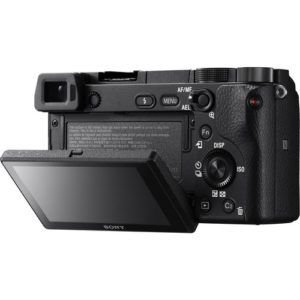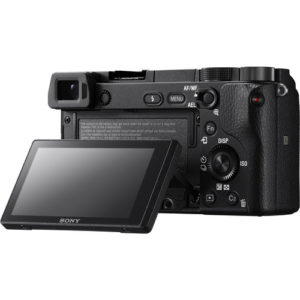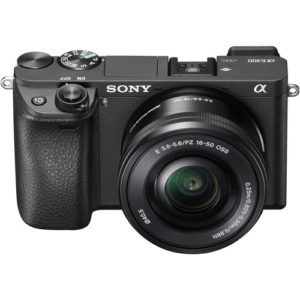Of all the mirrorless cameras on the market today, the most logical competitor for the recently announced Canon EOS M5 is the Sony a6300. Why? Because they have so many features in common, including a 24MP APS-C sensor, advanced hybrid autofocus systems, built-in 0.39 type OLED electronic viewfinder with 2360K dots and 14 bit RAW output. And at around $1000 for the body, they are even priced similarly.
Since they share so many characteristics, it is logical to wonder how they differ and more importantly, whether these differences should affect your decision to choose one or the other.
Below you can find the ten main differences between the EOS M5 and the a6300 according to their specifications. As always, if we have the chance to test both bodies side-by-side, we will upgrade this preview to a full comparison!
Ethics statement: The information supplied in this article is based on official specifications, press releases and our personal experience with Canon and Sony cameras. If we get the chance to test the two cameras side-by-side, we will publish a full comparison. We were not asked to write anything about these cameras, nor were we provided any compensation of any kind. Within the article, there are affiliate links. If you decided to buy something after clicking the link, we will receive a small commission. To know more about our ethics, you can visit our full disclosure page. Thank you!
1. SLR vs Rangefinder Body
Let’s start with one of the most physically obvious differences: the design.
The EOS M5 has a distinctly SLR-like appearance, mostly owing to the central positioning of its built-in electronic viewfinder and substantial grip. In addition to a polycarbonate chassis, it has a number of external dials including two control dials, a mode dial and an exposure compensation dial, as well as a plethora of buttons around the body including four customisable function buttons.
The a6300, on the other hand, has been given a rangefinder-esque appearance, complete with a flat top, an electronic viewfinder on the left-hand side of the body and a magnesium alloy chassis. The only non-rangefinder characteristic of the a6300 is the large grip out front. Although it has five more function buttons than the EOS M5, it lacks a second control dial on top.
2. Weather Resistance
The second difference also concerns the body. While the a6300 has a dust and moisture resistant chassis, the EOS M5 lacks all weather sealing, which is a shame since most of today’s mid-to-high end mirrorless cameras incorporate this feature. That said, none of the EOS M lenses are weather-sealed, so even if the body were resistant, it would still be risky to take the combo out in inclement conditions.
3. LCD Monitor
Both cameras come with a tilting LCD monitor but the EOS M5’s has more advanced specifications.
The EOS M5’s LCD screen is a 3.2-inch type, which is slightly bigger than your average camera screen. It has a 3:2 aspect ratio, 1650K dots of resolution and touch sensitivity. You can even use the touch screen when looking through the electronic viewfinder thanks to a feature called Touch AF. What’s more, it is tiltable 85 degrees up and 180 degrees down, making it possible to take self portraits hand-held.
The a6300 has a 3-inch wide type LCD screen with just 921K dots of resolution. It too can be tilted but its movement is limited to 90 degrees up and 45 degrees down. Though Sony is capable of touch technology, as seen on the entry-level a5100, it hasn’t been given to the a6300.
4. Full HD vs 4K video
One of the most significant differences between the two models is their video capabilities.
The a6300 is capable of shooting in UHD 4K up to 30fps with full pixel readout and no pixel binning in Super 35mm format and Full HD up to 120fps. It uses an XAVC S codec and records at a bit rate of 100 Mbps (4K) and 50 Mbps (standard full HD).
Of interest to filmmakers is S-Log gamma recording with 14-stop latitude in S-Log3 gamma, support for S-Gamut for a wider colour space, and Gamma Display Assist which allows you to monitor your image or check the focus when recording S-Log movies.
The camera’s hybrid autofocus system with 425 phase detection AF points also works for video and in our experience, does a very good job of detecting and tracking moving subjects thanks to its High-density tracking AF technology.
The EOS M5, on the other hand, is only able to shoot in Full HD up to 60fps and lacks more advanced settings and profiles, which is fine if you are a casual video shooter but may not be enough for more serious filmmakers. The only feature it has that the a6300 lacks is 5-axis digital image stabilisation for video (electronic stabilisation + optical stabilisation combined).
As for its Dual Pixel AF system, it should work very well for tracking in video mode if the performance of Canon’s DSLRs and camcorders is any indication.
Both cameras feature a 3.5mm microphone input jack but lack a headphone input.
5. USB Charging
A small difference is that the a6300 can be charged via USB while the EOS M5 cannot. This means that you’ll always have to keep a dedicated charger with you.
6. Live View and Continuous Shooting Speed
Between the two cameras, the a6300 has a slightly faster continuous shooting speed. It is capable of up to 11fps in Hi+ mode, 8fps in Hi mode, 6fps in Mid mode and 3fps in Lo mode. The EOS M5, on the other hand, can manage up to 9fps with the AF fixed at the first shot or 7fps with AF tracking (Servo AF).
The a6300 enables uninterrupted live view up to 8fps (with blackouts) with minimal lag to follow the subject better. The EOS M5 disables live view when shooting in continuous mode and shows the last picture taken instead.
7. Bluetooth Connectivity
Today’s mirrorless cameras all have WiFi connectivity in some capacity but the EOS M5 takes it a step further with the integration of Bluetooth 4.1 alongside WiFi and Dynamic NFC. It maintains a constant low-power connection with your smartphone so you don’t have to reconnect the two devices every time you need to shoot remotely or transfer images.
The a6300 comes with WiFi and NFC One-touch functionality but lacks Bluetooth connectivity.
8. ISO Sensitivity Range
A small difference is the ISO sensitivity range of the two cameras. While both the EOS M5 and a6300 have a native range of 100 to 25600 ISO, the a6300 has an expandable value of 51200.
9. Electronic Shutter
Another difference worth mentioning is the electronic shutter on the a6300, and the lack thereof on the EOS M5. Electronic shutters are useful because they allow you to be discreet in situations where the sound of the shutter could draw unwanted attention, such as a church ceremony or theatrical performance.
On the a6300, the mechanical, first curtain and electronic shutters all work up to 1/4000s. The EOS M5’s mechanical shutter goes up to 1/4000s.
10. Native lens selection
Comparing the specifications of cameras of different brands is useful but knowing how many lenses are available for each system can make a big difference to the overall experience.
The Canon EOS M system hasn’t grown much since the first EOS M camera came out. Today seven lenses are available but only one has a fast aperture of f/2: the 22mm pancake. It is the only prime lens along with the 28mm f/3.5 macro. All the other lenses are zooms and have slower apertures. Among these lenses, there is the wide-angle 11-22mm f/4-5.6, the all-purpose zoom 18-105mm f/3.5-5.6 and the 55-200mm f/4.5-6.3 telephoto. They are all relatively small which makes the EOS M system the most compact APS-C mirrorless system out there but this is also due the lack of faster lenses. There is an EF mount adapter made by Canon that lets you use its DSLR lenses but on such a small camera, it doesn’t make much sense.
The Sony can benefit from more lenses. There are lots of native APS-C lenses and more choice when it comes to primes. Granted, the APS-C lineup isn’t perfect, being made up of many slow aperture zoom lenses, but you can also find f/1.8 primes for portraits and f/4 zoom lenses such as the 16-70mm Zeiss and the 18-105mm G. Sigma and Zeiss also produce some AF prime lenses for the E-mount (DN and Touit series). And let’s not forget all the lenses designed for the full frame A7 series that are compatible with the a6300. For example the FE 70-200mm f/4 is an excellent match and not too big for the camera. There is also the LA-EA3 Sony adapter to use A-mount lenses. Finally, the a6300 camera also work well with third-party adapters and EF lenses.
Usefully, Samyang produces several manual focus primes that are available for both mounts.
Conclusion
As with any two cameras that target the same niche, there are pros and cons to each.
The EOS M5 has the benefit of a touch sensitive LCD screen with a wider tilting angle and Bluetooth connectivity, while the a6300 brings advanced features like 4K video, Full HD video at 120fps, weather resistance, and an electronic shutter.
Though a thorough test is necessary to come to a concrete conclusion, there are certain features lacking from the EOS M5 that you would expect to see from a $1000 body – namely 4K video, a silent shutter and weather sealing – especially since they are standard features on most other mirrorless models within the same category.
Taking this into account, and the fact that both cameras have a 24MP APS-C sensor, an advanced hybrid AF system and a built-in electronic viewfinder, we would say that the a6300 still seems to be the best bang for the buck, not to mention that you have a wider choice of lenses.
Check price of the Canon EOS M5 on
Amazon | Amazon UK | B&H Photo | eBay
Check price of the Sony a6300 on
Amazon | Amazon UK | eBay | B&H Photo

